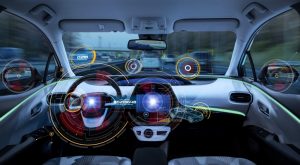
A new world has opened up in insurance, as the Internet of Things (IoT) changes how insurers and individuals operate. The transition towards a preventative business model is almost inevitable as technology becomes more connected and smarter. Insurance companies cannot afford to ignore the arrival of the IoT, or they will end up being the Toys R Us of the insurance world, left behind by new entrants and those who have managed to adapt successfully to new ecosystems and the demands of the market.
Using data to make intelligent customer decisions
Data will of course be the not-so-secret ingredient to success and the key to operating effectively in this new world, not least because of the sheer volume of data generated by IoT sensors.
The average car contains over 300 sensors, but the vast majority of them generate information that is neither useful nor interesting to insurers most of the time. It is, therefore, important to consider how to identify what is important and when that data source needs to be considered. The priority should be to identify how the information can help the customer, and to make it specific to the customer’s need, whilst supporting the business goals and objectives of the insurer.
The vast majority of car sensors generate information that is neither useful nor interesting to insurers most of the time. How to identify what is important? #IoT #Insurance Click To TweetSensor information needs to be used to support good business decisions. For example, the gearbox oil temperature sensor is vital to the car’s engine management system, but not necessarily to insurers. Data streamed from temperature or weather sensors, by contrast, can identify customers who may be taking unnecessary risks by driving when conditions are unsuitable. The question then is how to use the information from that sensor to support the insurer’s business decisions. Should the organisation, for example, send messages to the driver asking them not to drive and/or suggesting the purchase of snow chains, increase their premiums temporarily or permanently, or even refuse insurance? I am not sure that drivers or insurers have really resolved — or even started to fully consider — some of these questions yet. Let alone start to consider how much data they are willing to share and how much autonomy they are willing to accept from artificial intelligence systems interpreting that data behind the scenes.
A move towards preventative management
Insurance has always been about risk, but the advent of IoT data offers the potential to start to actually manage and reduce risk by means other than just pricing and premiums. The products on offer are therefore likely to change, and become much more dynamic, responding to risks that can be identified before they occur and then prevented. For example, a household insurer that is given access to a customer’s smart home management system could identify the risk of fire or theft by using data from the smart home combined with open data relating to crime in the area and offer advice on additional home security or smart fire alarms to prevent an incident from occurring or at least minimise it.
Insurance companies have a long tradition in the use of analytical methods. Where does the insurance industry stand in terms of modern analytics and artificial intelligence? This is what our industry experts found out in personal talks with insurers from all over Europe. Read the survey results.
What is more important here is that the relationships with customers are also likely to become more dynamic and interaction-based. Is this generational? Much is said about how millennials value experience, and want instant answers, and this obviously affects insurance too. There is also evidence, though, that the demands of Generation X are changing. A recent survey found that almost half of Gen Xers had actively avoided buying a product or service because the contract tie-in was too long. There is a balance to be found between immediate gratification, supported by rapid transactions, and the drive to build long-term relationships with customers, to support improved experiences.
Partnerships and relationships
New partnerships between insurers and other organisations also offer opportunities to improve customer intelligence and build new and ongoing relationships with customers. An obvious partnership is with car manufacturers, to incorporate more useful sorts of sensors and information-gathering options into vehicles. Other, less obvious, partnerships include smart cities, which are becoming able to gather huge amounts of data about the behaviour of individuals and not just in vehicles.
Consensual use of data to reward and encourage good (safe) drivers for example and encourage particular actions that reduce risk to both the driver and the insurer could benefit all.
This may sound like the beginnings of a surveillance state, but consensual use of this data to reward and encourage good (safe) drivers for example and encourage particular actions that reduce risk to both the driver and the insurer could benefit all. More importantly, it offers potential for a stronger engagement between customer and insurer. If the insurer is invited by the customer to monitor risk in real-time, there are more opportunities to communicate with the customer. Done correctly, this could build stronger and more loyal relationships with customers moving the decision customers make about buying insurance to one that is based not purely on price.
Changing perceptions and developing experiences
Insurance is often seen as a commodity, but anyone who has ever had to deal with an insurance claim knows that this is far from the truth. The difficulty for insurers has always been to sell customer experience without dwelling on the negative aspects: that is, needing to make a claim.
The advent of the IoT offers potential for insurers to start to think about developing a more high touch customer relationship, with experience becoming more important. This prevention-based model of insurance, which is already starting to emerge in both home and car insurance, is only like to expand in importance alongside the Internet of Things.

